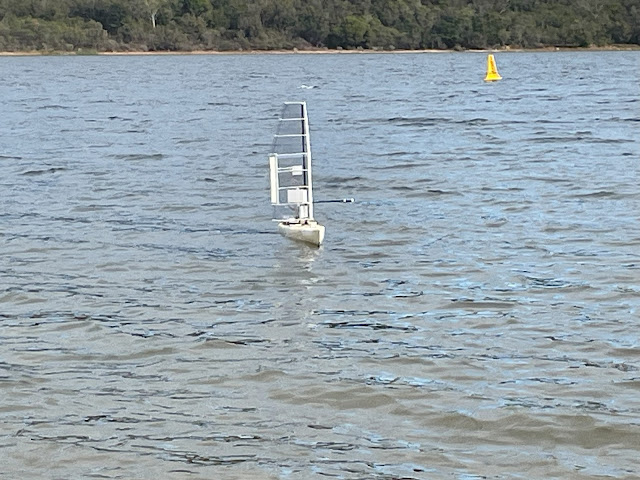Measuring Angle of Attack of a Self-Trimming Wing Sail
An important performance characteristic of a self-trimming wing-sail assembly is the relationship between trim-tab deflection and the resulting angle of attack (AOA).
Within the normal operating range, this relationship is approximately linear.
A practical method for quantifying this relationship uses the existing control and sensing capabilities of the sailing drone.
The onboard system can both set the trim tab to a defined angle and measure the corresponding equilibrium orientation of the wing sail relative to the wind.
Calibration Method
A dedicated calibration procedure was implemented within the control software.
During calibration:
- The vessel is held stationary in a steady, uniform breeze.
- The software sets the trim tab to a known deflection and measures the resulting equilibrium AOA, averaged over several seconds to reduce noise.
- The trim tab is then set to the same angle in the opposite direction, and the new equilibrium AOA is recorded.
The effective change in AOA produced by the trim tab is calculated as half the difference between these two measurements.
This process is repeated across a series of trim-tab deflections to construct a calibration curve of trim-tab angle vs. resulting AOA.
The illustration below shows a sample measured response of the wing sail to a reversal of trim-tab deflection:
- On the left, the wing has rotated to an equilibrium position 52.5° from the reference line.
- On the right, with the trim tab reversed, the wing equilibrates at 22.6°.
- The total change in wing angle is 29.9°, giving an effective AOA of 15° (half the difference).
 |
| Illustation of the trim tab on opposite sides with the change in wing angle |
 |
| Example Run of the Trim Tab Authority test, covering 10 to 17 degrees for the Trim Tab. |
 |
| Scatter plot of results with lines of best fit. |




















































